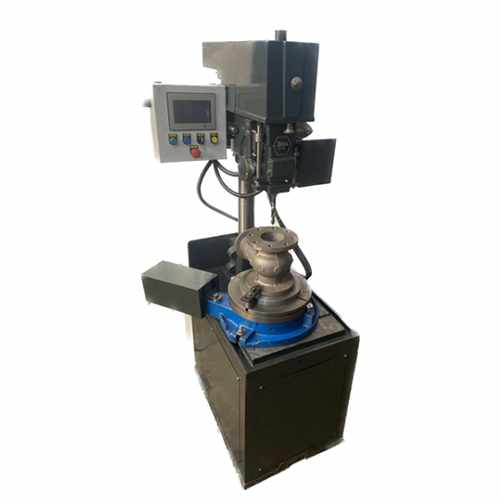
Introduction
The Asia-Pacific Automotive AI Market is experiencing unprecedented growth, driven by rapid advancements in artificial intelligence (AI) and increasing demand for smart, connected vehicles. The market is projected to reach USD 6.81 billion by 2030, growing at a compound annual growth rate (CAGR) of 30.6%. A key driver of this transformation is multimodal AI, which integrates multiple data inputs—such as voice, visuals, gestures, and contextual data—to deliver seamless and personalized in-vehicle experiences. This SEO-optimized article explores the role of multimodal AI in enhancing in-vehicle experiences across the Asia-Pacific, highlighting market trends, innovations, and key players like Qualcomm, Intel, and NVIDIA.
Why Multimodal AI Matters in Automotive
Multimodal AI combines various sensory inputs to create intuitive human-machine interactions, revolutionizing how drivers and passengers engage with vehicles. In the Asia-Pacific, where countries like China, Japan, and South Korea lead in automotive innovation, multimodal AI is becoming integral to advanced driver assistance systems (ADAS), infotainment, and autonomous driving. By processing data from cameras, microphones, radar, and sensors, multimodal AI enables vehicles to understand and respond to complex user needs, enhancing safety, comfort, and convenience.
Market Trends Driving Multimodal AI Adoption
1. Rise of Software-Defined Vehicles (SDVs)
The shift toward SDVs, which rely on software for functionality and updates, is a major trend in the Asia-Pacific. Multimodal AI powers SDVs by enabling real-time processing of diverse data streams, from voice commands to gesture controls. Companies like Qualcomm, with its Snapdragon Auto platform, are integrating multimodal AI to support digital cockpits and ADAS, catering to the region’s demand for intelligent vehicles. This trend aligns with China’s push for smart manufacturing and Japan’s focus on autonomous driving technologies.
2. Growing Demand for Connected Cars
Connected car technologies, supported by 5G and vehicle-to-everything (V2X) communication, are gaining traction in urban centers like Singapore and Tokyo. Multimodal AI enhances connected cars by enabling seamless interactions between vehicles, infrastructure, and cloud systems. For instance, NVIDIA’s DRIVE Hyperion platform uses multimodal AI to process visual and sensor data for real-time navigation and traffic prediction, addressing Asia-Pacific’s need for efficient mobility solutions.
3. Government Support and Regulatory Frameworks
Government initiatives across the Asia-Pacific are accelerating AI adoption in the automotive sector. China’s New Generation Artificial Intelligence Development Plan (2020-2030) aims to make the country a global AI leader, with a focus on autonomous vehicles and EVs. South Korea’s 5G infrastructure investments and Singapore’s smart city projects further support multimodal AI deployment. These policies create a favorable environment for companies like Intel, which introduced AI-enhanced system-on-chips (SoCs) for SDVs at CES 2024.
4. Consumer Demand for Personalized Experiences
Asia-Pacific consumers, particularly in China and India, expect highly personalized in-vehicle experiences. Multimodal AI meets this demand by enabling emotion-responsive systems and tailored infotainment. For example, Qualcomm’s acquisition of Movian AI in April 2025 enhances its generative AI capabilities, allowing vehicles to adapt to drivers’ emotional states and preferences, a feature increasingly popular in the region’s luxury vehicle segment.
Multimodal AI Applications in the Asia-Pacific Automotive Market
1. Enhanced Driver and Passenger Monitoring
Multimodal AI integrates visual, audio, and biometric data to monitor driver behavior and passenger comfort. In Japan and South Korea, where safety regulations are stringent, companies like NVIDIA leverage multimodal AI for driver monitoring systems that detect fatigue or distraction. These systems use facial recognition, eye-tracking, and voice analysis to ensure safer driving experiences, aligning with the region’s focus on reducing road accidents.
2. Advanced Infotainment Systems
Infotainment systems powered by multimodal AI offer voice-activated controls, gesture recognition, and personalized content delivery. In China, where AI-driven infotainment is a key differentiator, automakers like Geely use multimodal AI to provide immersive in-car experiences, such as interactive dashboards and real-time entertainment recommendations. Qualcomm’s Snapdragon Digital Chassis supports these applications, enhancing user engagement in connected vehicles.
3. Autonomous Driving and ADAS
Multimodal AI is critical for autonomous driving, processing data from cameras, LiDAR, and radar to enable real-time decision-making. In China, autonomous taxi operations under new standards introduced in July 2021 rely on multimodal AI for navigation and obstacle detection. Intel’s OpenVINO 2024.5 software optimizes computer vision for ADAS, supporting features like adaptive cruise control and lane-keeping assistance, which are increasingly standard in Asia-Pacific vehicles.
4. V2X Communication for Smart Mobility
Multimodal AI enhances V2X communication by analyzing data from multiple sources to predict traffic patterns and optimize routes. In Singapore, where smart infrastructure is a priority, Qualcomm’s 5G-enabled platforms use multimodal AI to facilitate vehicle-to-infrastructure interactions, reducing congestion and improving road safety. This technology is vital for Asia-Pacific’s densely populated urban areas.
Key Players and Their Innovations
Qualcomm Incorporated
Qualcomm is a leader in the Asia-Pacific automotive AI market, leveraging its Snapdragon Auto and Digital Chassis platforms to deliver multimodal AI solutions. Its 2024 collaboration with Hyundai Motor Group integrates multimodal AI into digital cockpits, enhancing infotainment and ADAS. The acquisition of Movian AI in April 2025 strengthens Qualcomm’s generative AI offerings, enabling emotion-responsive in-vehicle systems. Qualcomm’s focus on 5G and Wi-Fi 7 connectivity supports V2X applications, aligning with Asia-Pacific’s smart mobility goals.
Intel Corporation
Intel is driving multimodal AI adoption through its AI-enhanced SDV SoCs and OpenVINO software. The 2024 acquisition of Silicon Mobility SAS bolsters Intel’s EV energy management solutions, integrating multimodal AI for efficient power usage. Intel’s UCIe-based chiplet platform, developed with imec, supports scalable AI architectures, catering to the region’s autonomous vehicle market. Its 5th Gen Xeon and Core Ultra processors, launched in December 2023, power neural network computations for ADAS and infotainment.
NVIDIA Corporation
NVIDIA’s DRIVE Hyperion platform is a cornerstone of multimodal AI in the Asia-Pacific, combining computer vision, NLP, and sensor fusion for autonomous driving. Its partnerships with regional automakers, such as BYD in China, integrate multimodal AI into EVs and connected vehicles. NVIDIA’s advancements in generative AI, showcased at GTC 2024, enhance in-vehicle personalization, making it a key player in the region’s luxury and autonomous vehicle segments.
Challenges in Multimodal AI Adoption
Despite its potential, multimodal AI faces challenges in the Asia-Pacific automotive market:
· High Development Costs: Developing multimodal AI systems requires significant investment in hardware, software, and talent, posing barriers for smaller players.
· Data Privacy Concerns: The region’s diverse regulatory landscape, particularly in China and India, raises concerns about data security and user privacy.
· Talent Shortage: A lack of skilled AI professionals in some Asia-Pacific countries hinders rapid scaling of multimodal AI solutions.
· Interoperability Issues: Integrating multimodal AI across diverse vehicle platforms and infrastructure requires standardized protocols, which are still evolving.
Opportunities for Growth
The Asia-Pacific automotive AI market offers significant opportunities for multimodal AI:
· EV Market Expansion: With China leading global EV production, multimodal AI can optimize energy management and enhance user experiences in electric vehicles.
· Autonomous Vehicle Development: Supportive policies in China and Japan create opportunities for multimodal AI in autonomous driving, with a projected market growth of 30.6% CAGR from 2024 to 2030.
· Smart City Initiatives: Investments in smart infrastructure in Singapore and South Korea enable multimodal AI to support V2X and urban mobility solutions.
Future Outlook for Multimodal AI in Asia-Pacific
The future of multimodal AI in the Asia-Pacific automotive market is promising, driven by technological advancements and supportive ecosystems. By 2030, multimodal AI is expected to be a standard feature in most new vehicles, enhancing safety, connectivity, and personalization. Innovations like generative AI and edge computing will further improve real-time processing, making vehicles more responsive to user needs. Collaborations between global players like Qualcomm, Intel, and NVIDIA and regional automakers will accelerate adoption, positioning Asia-Pacific as a global leader in automotive AI.
Conclusion
The Asia-Pacific automotive AI market is undergoing a transformative shift, with multimodal AI at the forefront of enhancing in-vehicle experiences. By integrating voice, visual, and contextual data, multimodal AI delivers safer, smarter, and more personalized driving experiences, aligning with the region’s demand for connected and autonomous vehicles. Key players like Qualcomm, Intel, and NVIDIA are driving innovation through advanced platforms and strategic partnerships, supported by government initiatives and consumer demand. As the market grows toward USD 25.78 billion by 2030, multimodal AI will play a pivotal role in shaping the future of mobility in Asia-Pacific, making vehicles an integral part of the region’s digital ecosystem.










Write a comment ...